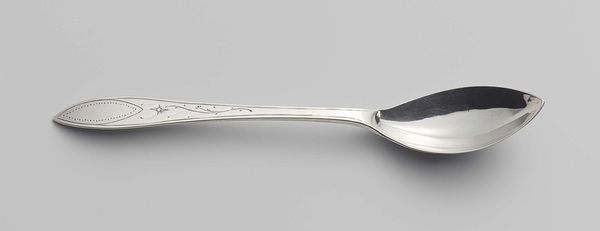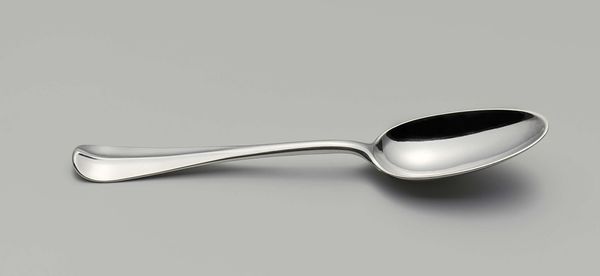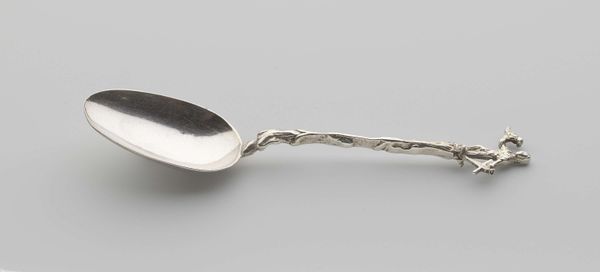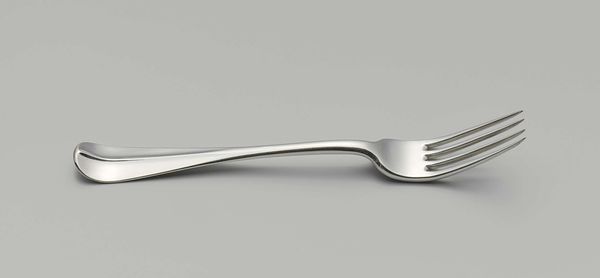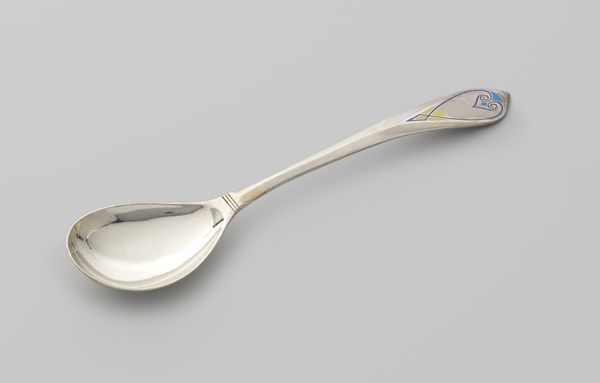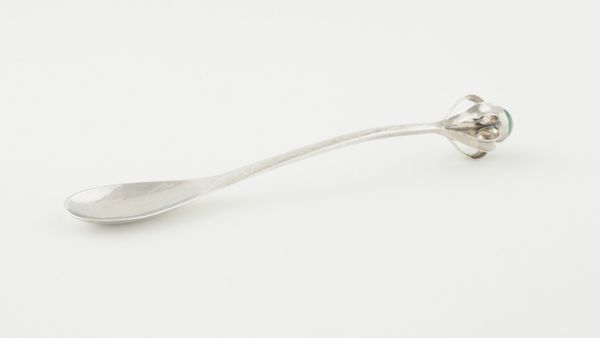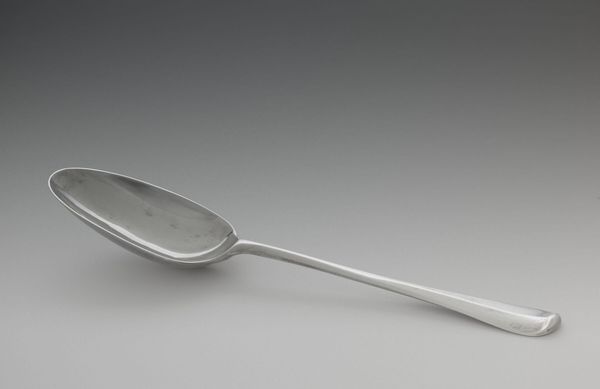
Dimensions: length 25.9 cm, width 5.8 cm, depth 3.2 cm
Copyright: Rijks Museum: Open Domain
Editor: Here we have a silver fruit spoon, made in 1791 by Jan Christoffel Ultzen. It's delicate, with these intricate lattice-like patterns cut out of the bowl. What can you tell me about it from a formalist point of view? Curator: A keen observation. Immediately, one notes the interplay between positive and negative space within the bowl. The voids, carved meticulously, establish a tension with the solid silver, crafting an optical dynamism. Note, too, the parabolic curve mirrored in the bowl of the spoon itself and echoed in the smaller decorative cut-outs. Editor: It's almost baroque with the detail, isn't it? I didn’t really consider the empty spaces as a structural part of the piece. Curator: Precisely. Are we not compelled to contemplate how the curvature affects light reflection and thus, our perception? Observe how light passes *through* the ornamentation versus how it is cast off of the handle; the designer is clearly playing with depth of field. This articulation through its own materiality, presents a language unto itself. Editor: So, without knowing who the spoon belonged to or its original purpose, we can still appreciate its artistic value based on composition alone? Curator: Absolutely. Decontextualized, the spoon becomes a study in form. Its inherent value lies not in what it *represents,* but how the artist manipulates space, texture, and light. Ultimately it transcends function to become a visual exercise. Editor: It’s interesting to think about how we often prioritize what a piece is "about," instead of how it actually *looks*. It's certainly giving me a fresh perspective on approaching artworks. Curator: Yes, looking *at* rather than *through* allows new discoveries. The inherent details that may tell stories independent of the ones that history writes for it.
Comments
No comments
Be the first to comment and join the conversation on the ultimate creative platform.

